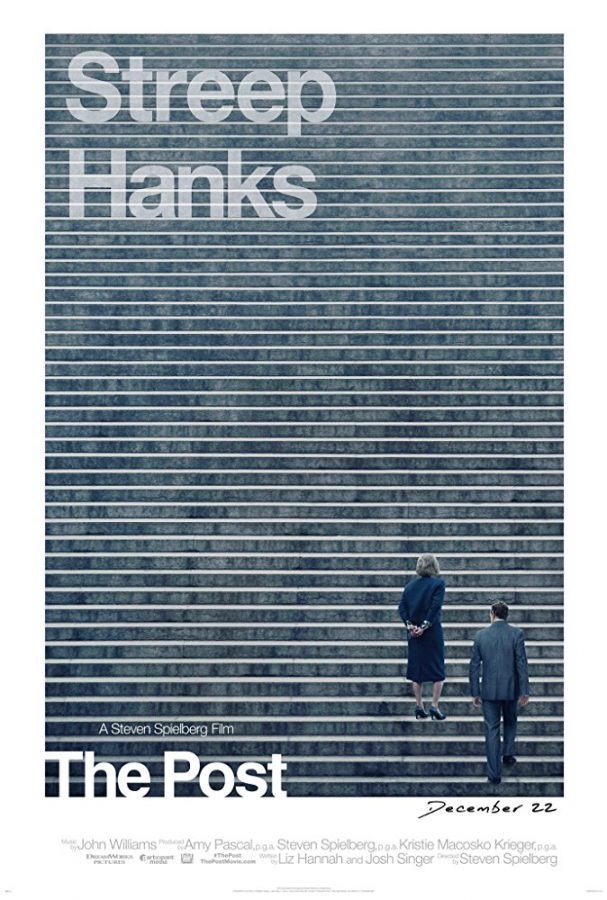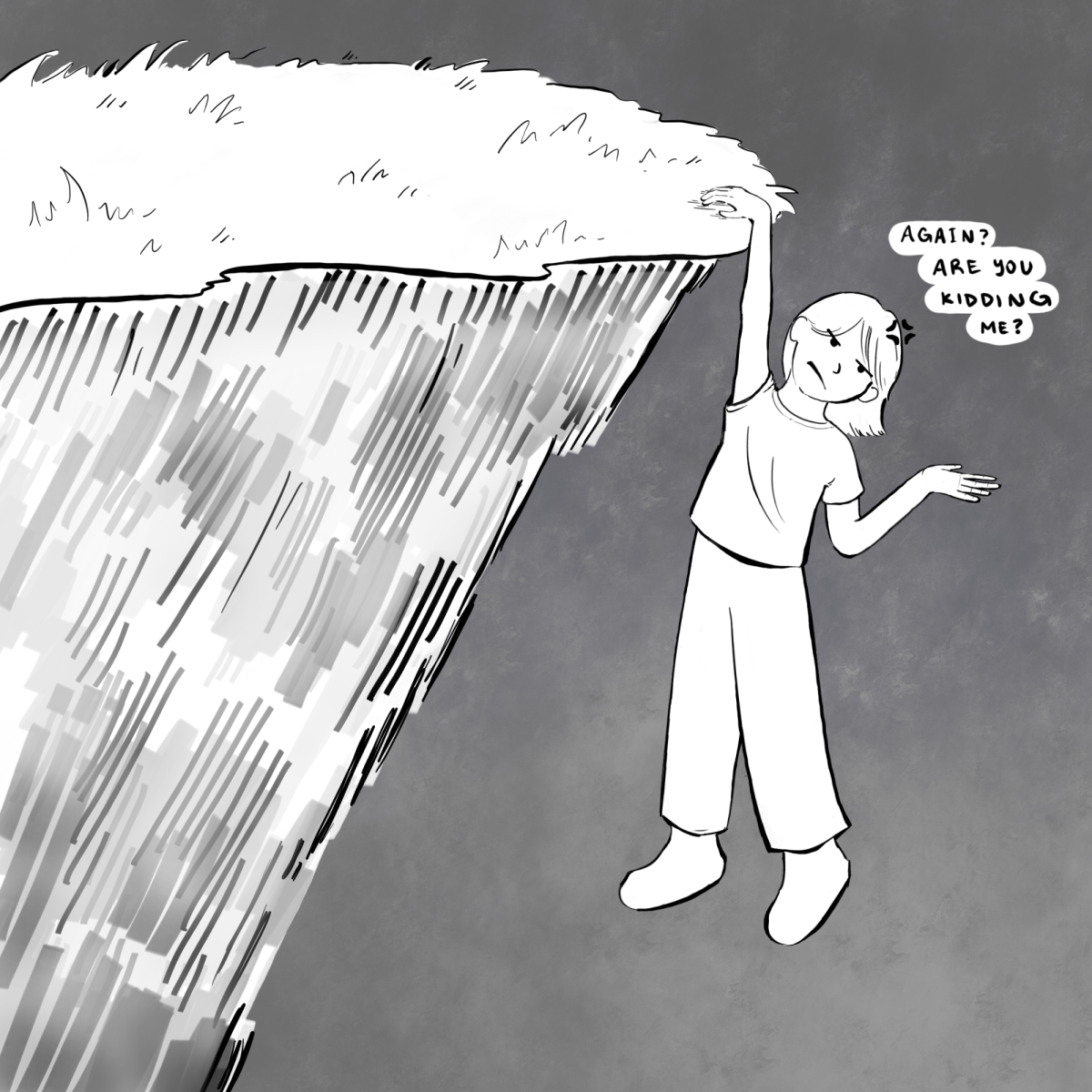Review: Spielberg’s ‘The Post’ a perfectly-timed defense of the press
January 17, 2018
“The press was to serve the governed, not the governors.”
These are the words of the Supreme Court ruling featured in the film “The Post” directed by the amazing Steven Spielberg. The film takes place in the early 70s, a time period when President Nixon attempted to control the news outlets that cover events at the White House. These events not only included state events, but personal events such as his daughter’s wedding.
This film shows the conflict with Washington Post publisher Kay Graham and editor Ben Bradlee on one side and President Nixon on the other side.
The film starts out in the middle of a battle of the Vietnam War in the jungle. Daniel Ellsberg (Matthew Rhys) is a military analyst employed by the RAND Corporation, a nonprofit organization that offers research and analysis on the U.S. Armed Forces.
On the plane back to the U.S., Ellsberg is asked about the progress of the war. He clearly sees that this war is going nowhere and John F. Kennedy and Lyndon B. Johnson’s Defense Secretary Robert McNamara, played by Bruce Greenwood, agrees. However, once confronted by the press when the plane lands, he coolly replies with the exact McNamara smile that “in every respect, we are making progress.”
The scene then shifts to Washington and Ellsberg enters the office where the Pentagon Papers, that contain a study about how the conflict in Southeast Asia came to exist and the direction the war must go for the United States to come to a satisfactory resolution, are stored.
Ellsberg steals these papers (that have “Top Secret—Sensitive” written on them) and studies them.
As everyone now knows, the Pentagon Papers contained extremely classified information, leading the Nixon administration to argue that the press should not report on it.
After the New York Times published this information, a New York judge banned them from further publishing any stories relating to this subject.
The editor of the Washington Post, Ben Bradlee (Tom Hanks), is tired of having to catch up to the New York Times and immediately grabs the opportunity in front of him. With the Pentagon Papers in hand, the Washington Post begins its reporting on the incident.
The focus then shifts from the reporting to how the Papers came into the hands of the Washington Post. Ben Bagdikian (Bob Odenkirk), a reporter from the Washington Post, takes the documents from Ellsberg, the same source as the New York Times.
Once the Post’s report was published, the White House banned all reporters from the Washington Post to ever enter the grounds. The scene ended and shifted to the Watergate hotel, where there was a break-in. Washington Post reporters were banned from entering the White House, and the same newspaper’s reporters eventually led to the resignation of President Nixon.
Both Hanks and Streep did a phenomenal job with their roles as Bradlee and Graham. Both are brilliant actors, but the roles that they played had special characteristics that Hanks and Streep understood and portrayed well.
Graham was the first-ever female CEO. Once her husband Phil Graham committed suicide, the company was left to her. At first, she lacked confidence, but as , she developed and became a strong woman capable of handling all situations.
Streep did an excellent job showing that lack of confidence and development and also very successfully conveyed the relationship Graham had with the men of her paper and of the professional world.
Before her husband died, and even a little after, she was known as Mrs. Graham, the wife of Washington Post publisher Phil Graham. As she gained more experience as CEO of the company and as she became well-known in the professional world, the world began to see her as the new publisher for the Washington Post. This transition is perfectly depicted by Streep.
In an interview the costume designer Ann Roth had with The Hollywood Reporter, she said that she learned everything she could about Graham’s lifestyle before she began designing her costumes.
“I read Katharine Graham’s book and I had met her a few times,” Roth said in the interview. “I know where she went to school and what kind of life she had.”
By taking in as much as she could about the character’s lifestyle, she was perfectly able to capture everything about the time period in the two-hour film.
Spielberg paid attention to so many fine details that will make any journalism enthusiast love this film. With cameras rushing past cubicles in the Washington Post office, a copy editor crossing out words on a story, reporters frantically typing on a typewriter and the scene with the printing press putting together the print issue, Spielberg perfectly captures the life of a newspaper.
This film had my attention for its entire duration. The audience at the screening I attended was very responsive to the dialogue in the movie, as well. As soon as Streep defined the role of the press in society, the audience suddenly cheered and applauded.
With a government situation as similar as it was during this film, “The Post” has a modern relevance that runs parallel to its history lesson, and the filmmakers clearly knew this and exploited it. President Trump continues to discredit and foster public distrust in the press , in a time when it could be the one to reveal shocking truths about the government to the people.
Throughout the film, I could hear my fellow audience members responding to various lines in the film. At the very end, cheering and applause was all I heard. Throughout this presidency, there have been quite a few people criticizing the press. It was amazing to be in a room that was full of people who truly appreciate the press and journalism and understand their role in society.








